History & Geology
Exploring Iron Oxide Copper Gold Deposits
November 2017 by Chris Ralph
 The excitement over IOCG deposits began with the discovery of a monster deposit at Olympic Dam in Australia in 1976. The discovery was accidental as the operator was searching for strata-bound copper deposits.
The excitement over IOCG deposits began with the discovery of a monster deposit at Olympic Dam in Australia in 1976. The discovery was accidental as the operator was searching for strata-bound copper deposits.
All About Lead Minerals, Silver and Gold
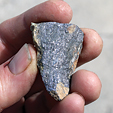 Many miners know that lead is very commonly associated with silver values, but the truth is that it is also associated with gold values in many locations as well.
Many miners know that lead is very commonly associated with silver values, but the truth is that it is also associated with gold values in many locations as well.
Jamestown and Our Mother Lode Gold Rush Adventures
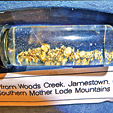 There are many other locations in the area where gold has been found, but Woods Creek is the most famous of the creeks and gulches in the area where the 49ers searched for that elusive yellow metal.
There are many other locations in the area where gold has been found, but Woods Creek is the most famous of the creeks and gulches in the area where the 49ers searched for that elusive yellow metal.
Why Haven't They Mined This Claim?
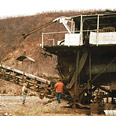 Improvements in mining equipment and techniques, along with a higher gold price, make many mining properties profitable today that may not have been in the past.
Improvements in mining equipment and techniques, along with a higher gold price, make many mining properties profitable today that may not have been in the past.
Gold Placers in Italy
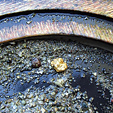 Gold is a fairly widespread mineral in the Italian Alps and in the Northern Apennines. It is found both in primary mineralization and in past and recent floods.
Gold is a fairly widespread mineral in the Italian Alps and in the Northern Apennines. It is found both in primary mineralization and in past and recent floods.
Placer Gold Deposits of New Mexico
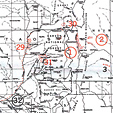 While a large number of locations have yielded some placer gold, most of the state’s placer production has come from a few productive districts.
While a large number of locations have yielded some placer gold, most of the state’s placer production has come from a few productive districts.
The Beatty Mining District of Nevada
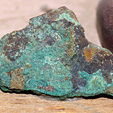 The Beatty Mining District in south-central Nevada has been one of the most productive Mining Districts in the state, producing millions of ounces of gold together with silver, fluorite, mercury and other valuable minerals.
The Beatty Mining District in south-central Nevada has been one of the most productive Mining Districts in the state, producing millions of ounces of gold together with silver, fluorite, mercury and other valuable minerals.
Nevada's Lithium Boom
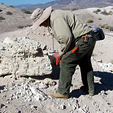 When prospecting for lithium, after confirming for macro attributes through research and field work, including examination of surface geology, the main tool is an accurate lithium assay.
When prospecting for lithium, after confirming for macro attributes through research and field work, including examination of surface geology, the main tool is an accurate lithium assay.
Subscription Required:
The Bawl Mill
• Legislative and Regulatory Update
• Ask The Experts - How do I work this glacial deposit?
• Ask The Experts - How do I best recover gold in pyrite?
• It Pays to Know Your Bedrock
• BLM Cancels 10-Million-Acre Sage Grouse Mineral Withdrawal
• Take it to Bedrock
• The Beatty Mining District of Nevada
• Flood Plain Gold Deposits—What Are They Really?
• Conrey Dredge No. 4
• Melman on Gold & Silver
• Mining Stock Quotes and Mineral & Metal Prices
Free:
Over the Divide: Nancy Glenn; Sondra (Adelson) Bernzweig







